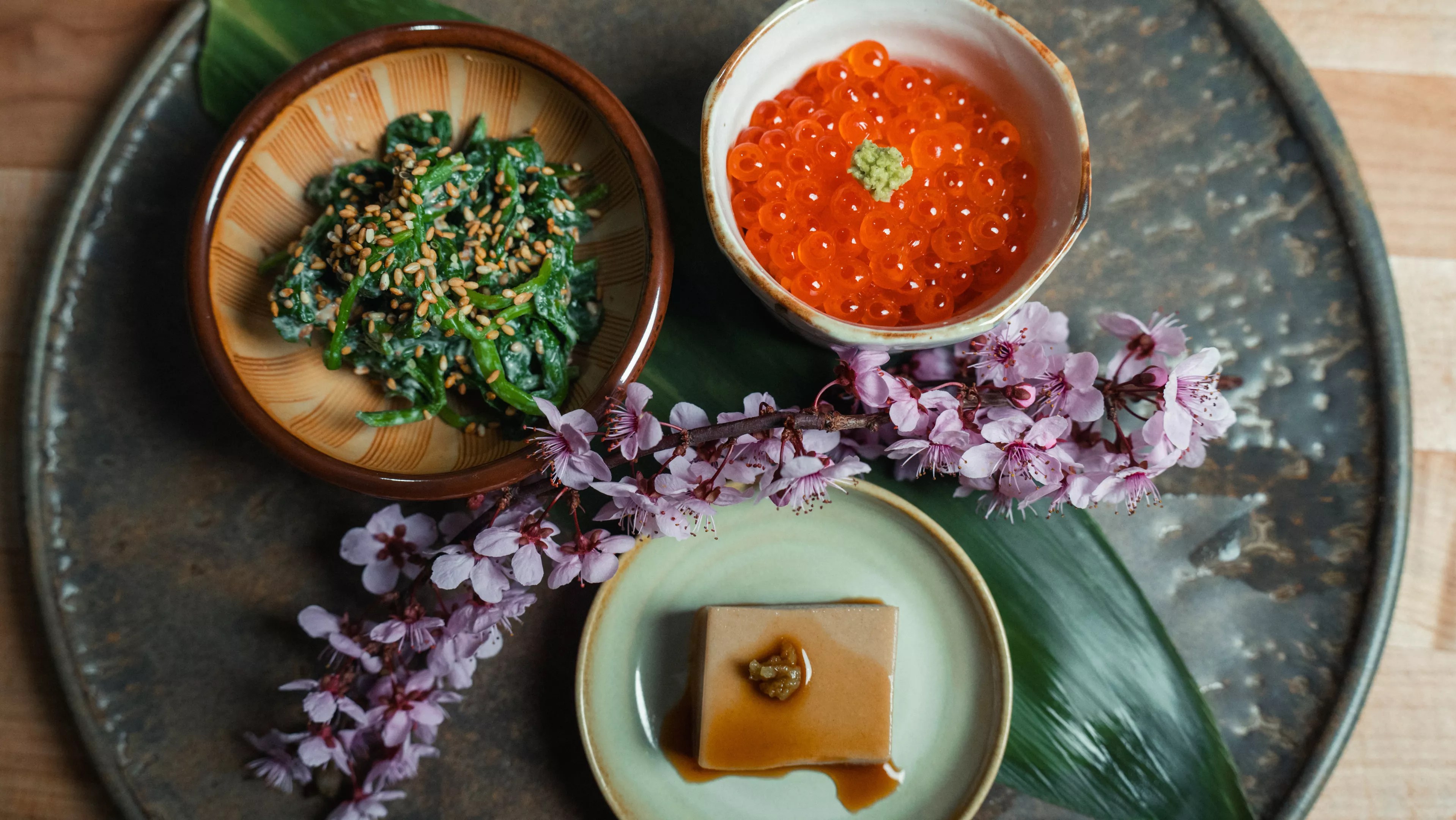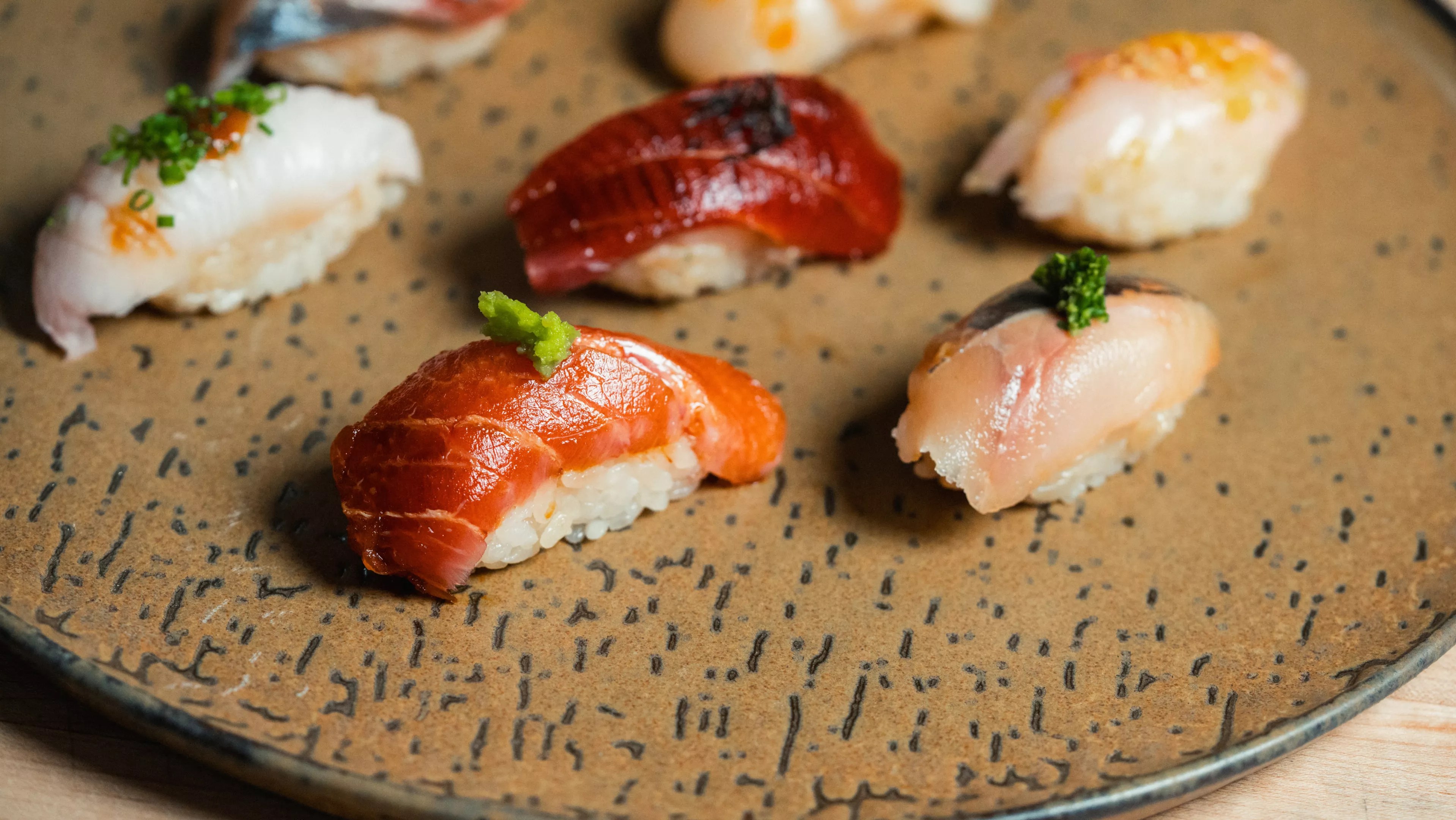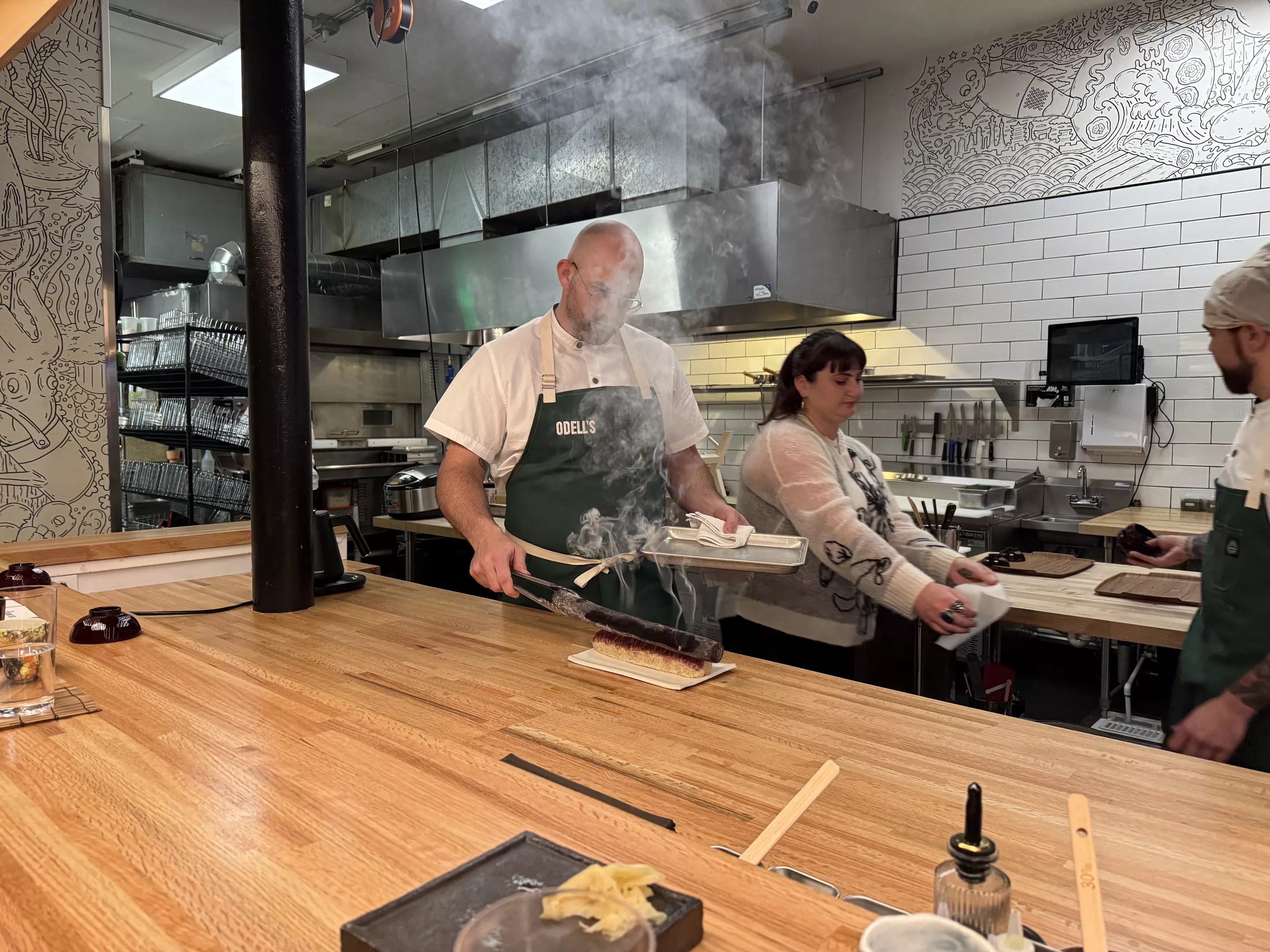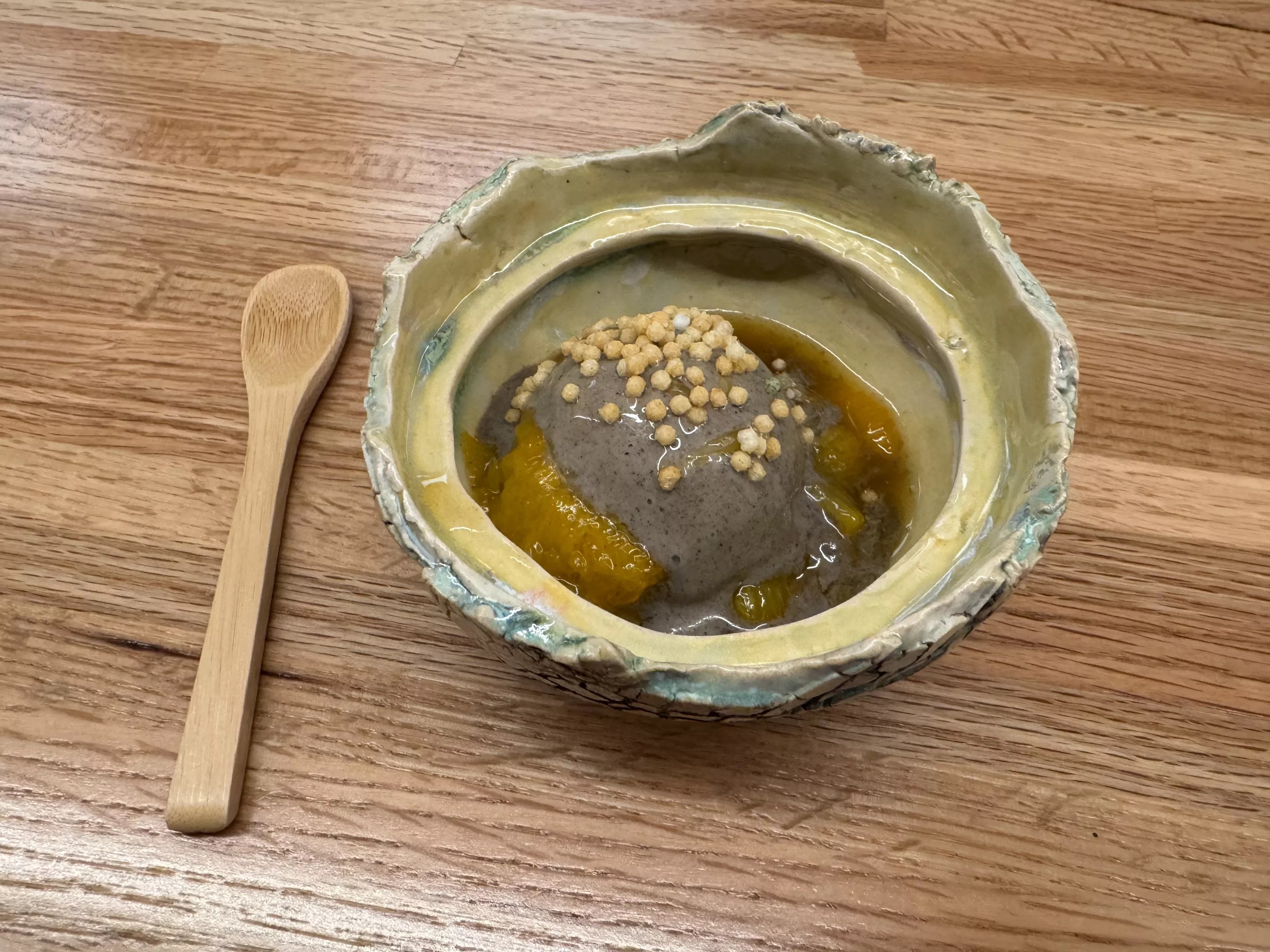
Jeff Fierberg

Audio By Carbonatix
Furikake bagels with pastrami lox by day. Seven-course kaiseki tasting menu by night. Odell’s Bagels in West Highland now offers reservation-only kaiseki-inspired dinners at the same counter where it serves bagels during the day.
While this city has dozens of tasting menus on which you could spend your hard-earned money, there are several things unique to The Counter at Odell’s:
The Kaiseki Journey
What is typical at an American Japanese restaurant, and therefore what’s expected, is to start the meal with miso soup (maybe also some edamame) as an appetizer, move onto sushi, then end the meal with the heaviest dish before dessert. This progression mirrors Western-style dining menus.
Denver, make your New Year’s Resolution Count!
We’re $15,500 away from our End-of-Year campaign goal, with just a few days left! We’re ready to deliver — but we need the resources to do it right. If Westword matters to you, please contribute today to help us expand our current events coverage when it’s needed most.
The practice of kaiseki turns that sequence on its head. There’s a general flow: a few light, cold dishes to start, followed by something steamed, something grilled, then rice/sushi, ending with miso soup before dessert. In Japan, miso soup “is consumed later on in the meal and usually with your last bite to help with digestion,” explains Miles Odell. The kaiseki menu originated from the tea ceremony and evolved through centuries of imperial court cooking; it’s now considered the Japanese equivalent to Western haute cuisine.

Sampler starter: bloomsdale spinach salad, rice topped with salmon roe, and sesame tofu made with sesame paste and arrowroot powder
Jeff Fierberg
Today, kaiseki is an art form that balances taste, texture, appearance and color. It’s rooted in using fresh, seasonal ingredients and prepared in ways to enhance, not overwhelm, its natural flavor. For example, the starter course of a recent Counter meal was a simple, straightforward sampler plate of Bloomsdale spinach salad, rice topped with salmon roe, and sesame tofu made with sesame paste and arrowroot powder so creamy that it was almost a sesame mousse in texture. Everything on the menu tasted clean, wholesome and nourishing, and created a nice deviation from Western-style tasting menus where you often leave bloated and overstuffed after sixteen courses.
The Conversation with Chefs
Because all the diners sit at the ten-person, L-shaped counter, they’re face-to-face with the chefs preparing and passing each dish. It makes for efficient service, with the general manager, chefs and waiters facing you the entire time – so water glasses are refilled instantly, plates are cleared as soon as you’re done, and there’s no long lull between courses.
And when you’re facing someone for an hour and a half, it’s hard not to chat it up. At first, it might seem like you’re bothering them, but the two sushi chefs behind the counter, Zach Chapla and David Arnold, who both came from Uchi, say they love getting to work in a small, intimate setting where they can talk with customers and answer their questions.

Nigiri courses at The Counter at Odell’s
Jeff Fierberg
You learn more about the food, where it’s from and how it’s being prepared. For example, our fifth piece of nigiri during the sushi course was a black cod from Monterey Bay; as Arnold set it down on our plates, he casually mentioned that “the fish is killed more humanely and it’s better for the texture because they die instantaneously.” That called for instant probing; from his expanded explanation, we learned about Seremoni Seafood, a California-based startup that’s the first in the world to automate the ike jime method, a technique used in Japan for centuries by fishermen to live-catch and insert a T-shaped spike into a fish’s brain versus letting the fish suffocate to death. Seremoni inserts fish into the “Poseidon” machine and uses machine learning and artificial intelligence to locate the brain and gills, diners learned.
The result is a dense white meat fish with high oil content that isn’t mushy and has a rich and buttery flavor; the cod holds its structure and stays moist even when barbecuing or smoking.
The Dinner Party Vibe
And it’s not just the chefs you end up chatting with. Because of the seating configuration, cross talk and shared commentary happens organically between parties. About ten minutes into our dinner, for example, we realized that more than half of the diners lived in the same neighborhood. In fact, the whole vibe was that of a cool, millennial dinner party; at one point, it seemed like everyone but me was trading opinions about this season of The White Lotus. (I’m just not a fan of cringe TV.) Chef Odell searing wagyu with burning branch. Helen Xu
Because there are only two seatings every night – at 5:30 and 8 p.m.-the group progresses through the tasting menu together, leading to nice shared moments with strangers. When it was time for the last nigiri, an indulgent wagyu beef with foie gras and caviar, Odell took out a burning branch to sear the top of the wagyu. Everyone whipped out their phones and collectively oohed and aahed.
The Thought Put Into the Mocktails
As someone who’s been sober since 2017, I’ve had to endure a long string of sour mix-sprite “mocktails.” So I genuinely appreciate it when a restaurant puts together an intentional, well-composed N/A beverage program for teetotalers. After a welcome bubbly, the first drink was a St. Agrestis Phony Negroni with the pleasant astringent taste you want from a negroni. Later, there was a refreshing oolong iced tea to cleanse the palate. Then, for the served sushi, Paul Lysek, general manager and beverage director, put a N/A lager in front of me and said, “One of my favorite things is having a nice, cold lager with my sushi, so here’s the N/A version.”
The buzzy, effervescent drink on my tongue played off wonderfully with the sushi. Then came a delicious yuzu coconut sour which I (unintentionally) shot in one gulp. And to end the meal, Lysek served a soothing genmaicha to help with digestion that left me feeling warm and happy. The alcohol counterpart of the beverage program received equal attention with pairings that were thoughtful, unexpected and designed to complement, rather than overshadow, the food.
The Plates Worth Talking About
Part of the kaiseki practice is beautiful plateware, chosen to enhance the appearance and theme of the meal. It’s also a bit of a personal obsession for Odell, who’s been collecting plateware for years. “I wanted to honor some of the local ceramists here and some are from my friend in Brooklyn, Nicole Pilar, who I think is so talented,” he says, adding that he visited the studio and collaborated with the artist on many of the dishes. “I think it really elevates the entire experience and I want to, if my accountant allows it, to keep expanding the collection.”
When asked how much he spent on plates, he answers with a laugh: “Too much.” At other restaurants, the plate the food is sitting on is often an afterthought, rarely noticed by the diner. But at the Counter, they’ll sometimes take center stage – like the jet-black plate under the Robata-grilled lamb served with artichoke and spring pea tendrils. The outer edges of the plate are jagged and organically formed in dramatic bubbles, giving it the appearance of charred rock or cooled lava.

Dessert “dragon’s egg bowl” with mochi cake, topped with black sesame ice cream and flambeed orange.
Helen Xu
In other cases, the plateware complements the aesthetics of the dish. The bowl holding the homey, nourishing steamed red sea bream dashi soup had a mottled finish, with an interior glaze in glossy oxblood that contrasted with the milky white of the broth and fresh green of the garnish. Then there are courses where the plates are just plain fun. “We specifically wanted it to look like a cracked dragon egg,” says Odell of the plate for the dessert course, which has an uneven seafoam-green glaze across the surface with hints of pale yellow and soft turquoise peeking through. When the dish is served, the top of the egg is lifted off by the chef, revealing a mochi cake, topped with black sesame ice cream and flambeed orange.
What’s Next?
The team plans to switch up the menu frequently. “Next week is not going to be the same. We’ll be changing the menu a lot so guests want to come back more often; they’ll have a different experience almost every time,” says Odell.
No matter what’s on the menu, dinner at the Counter is a fun time. The space is casual, the energy is loose, and the format is inviting to solo diners, regulars and everyone in between. The overall experience is thoughtful, well-executed and extremely nourishing – for both the body and soul.
The Counter at Odell’s is open Friday through Sunday inside Odell’s Bagel at 3200 Irving Street; reservations are available on Tock.